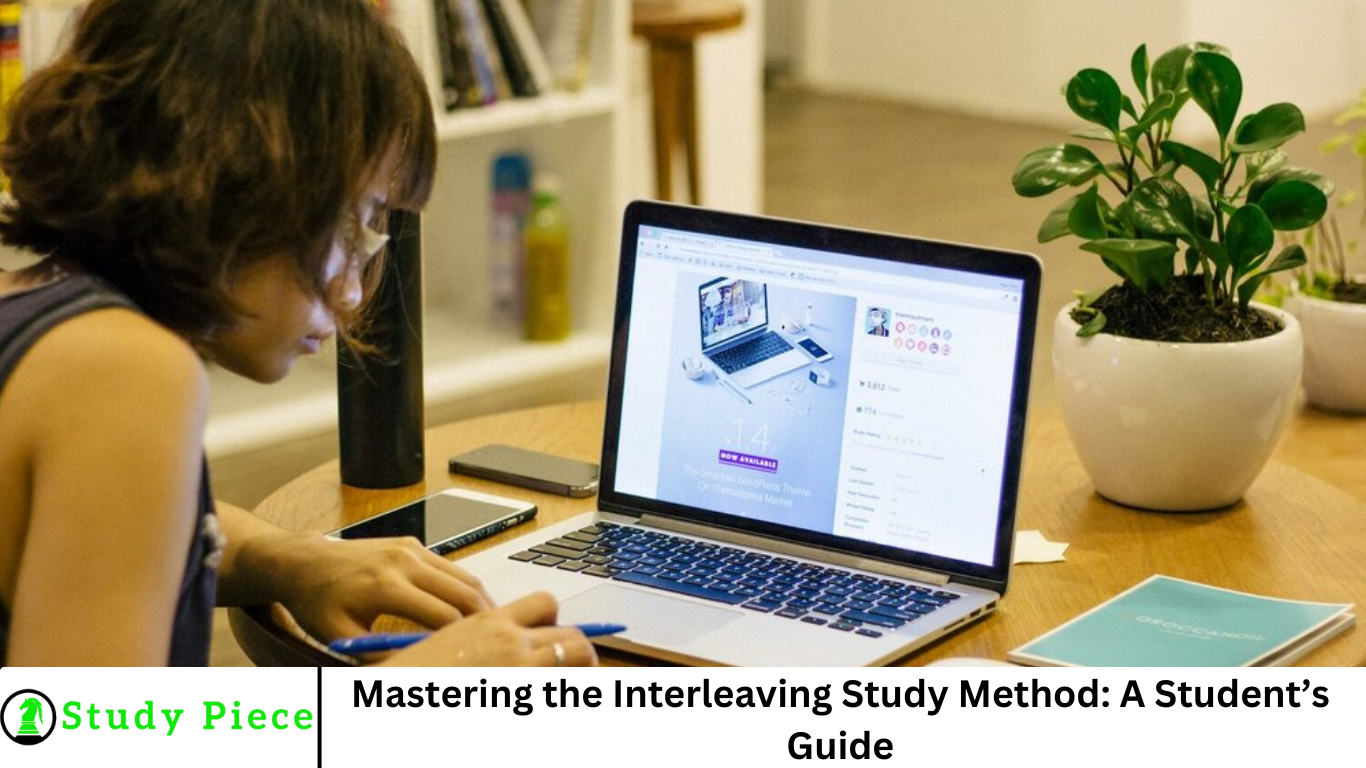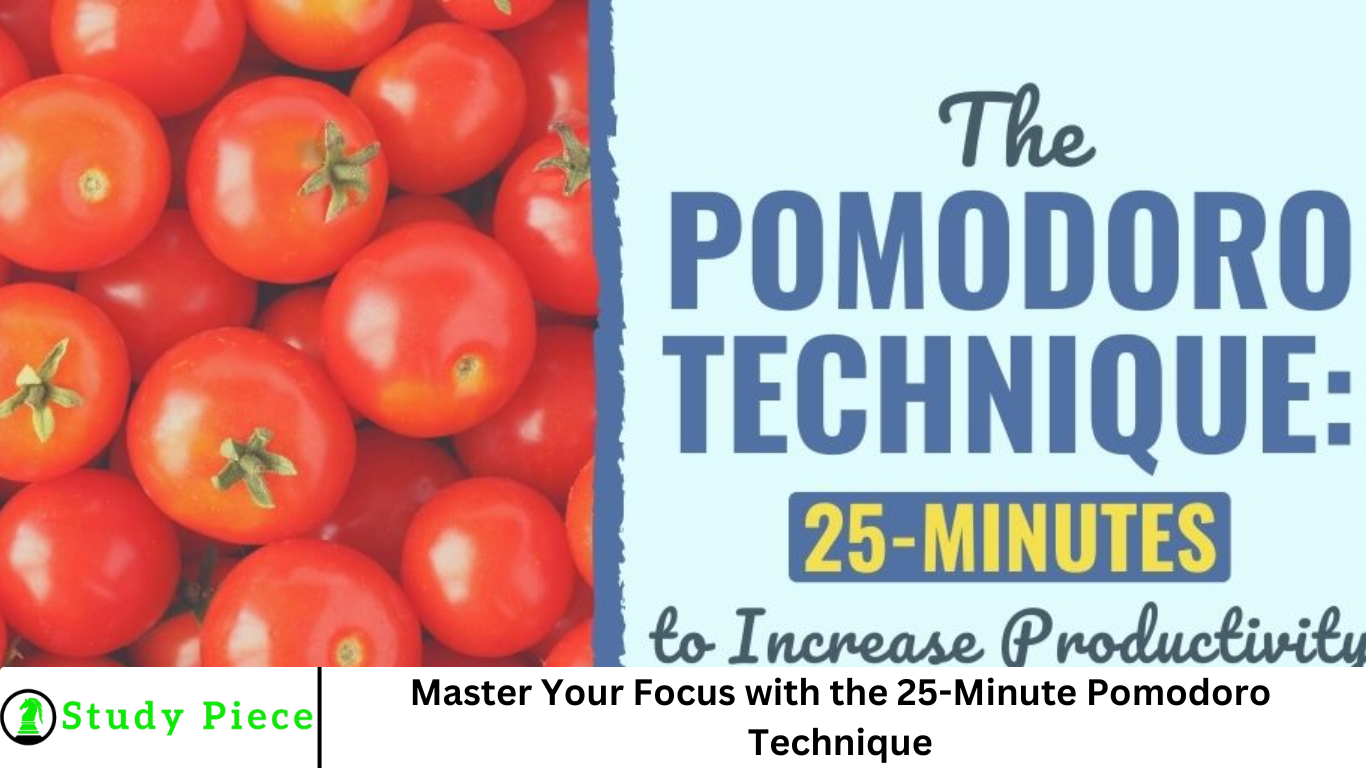Are you struggling to retain information despite spending hours studying? You’re not alone. Many students invest significant time revising, but the results don’t always reflect the effort. If you want to boost your learning efficiency, the interleaving study method could be the game-changer you need.
In this comprehensive guide, you’ll learn what the interleaving method is, why it works, how to implement it effectively, and tips for mastering it to ace your exams.
More Read: Master Your Focus with the 25-Minute Pomodoro Technique
What Is the Interleaving Study Method?
The interleaving study method is a learning technique where you mix, or “interleave,” different topics or types of problems during your study sessions instead of focusing on just one subject or skill at a time. For example, instead of spending an entire hour solving algebra problems, then another hour on geometry, you alternate between different topics in shorter intervals.
This contrasts with the traditional blocking method, where students study one topic extensively before moving on to the next.
Why Is Interleaving Effective for Learning?
Research shows that interleaving helps improve long-term retention and transfer of knowledge. Here’s why:
- Improves Discrimination: By mixing topics, your brain learns to distinguish between different types of problems or concepts, making it easier to apply the right approach when tested.
- Strengthens Memory: Switching between subjects forces your brain to retrieve and reinforce information repeatedly, which deepens memory traces.
- Enhances Problem-Solving Skills: Interleaving mimics real-world scenarios where problems are rarely presented in a predictable order, preparing you better for exams and practical applications.
- Reduces Mental Fatigue: Focusing on one topic for too long can lead to boredom and diminished focus. Interleaving keeps your mind engaged by introducing variety.
How to Use the Interleaving Study Method: Step-by-Step Guide
Step 1: Identify Your Study Topics or Skills
List the subjects or types of problems you need to study. For example, if you’re preparing for a math exam, your topics could be algebra, geometry, and calculus.
Step 2: Break Your Study Time into Chunks
Decide on manageable intervals — 20 to 30 minutes per topic is a good starting point, but you can adjust based on your concentration levels.
Step 3: Mix Topics During Each Session
Instead of studying one topic for an entire session, alternate between different topics. For example:
- 20 minutes on algebra
- 20 minutes on geometry
- 20 minutes on calculus
Then repeat the cycle or switch up the order.
Step 4: Review and Reflect
After each study session, spend a few minutes summarizing what you’ve learned from each topic. This reflection helps consolidate the material.
Interleaving vs. Blocking: Which One Should You Choose?
While the interleaving method has proven benefits, it’s important to understand when and how to use it effectively compared to the blocking method.
| Interleaving | Blocking |
|---|---|
| Mixes multiple topics or skills in one session | Focuses on one topic at a time |
| Encourages active retrieval and comparison | Allows deep focus on one subject |
| Better for long-term retention and transfer | Easier for initial learning or memorization |
| Can feel more challenging or slower | Feels smoother and faster in the short term |
Tip: Use blocking when you’re first learning a completely new concept and switch to interleaving as you start practicing and revising.
Tips for Mastering the Interleaving Study Method
1. Plan Your Study Schedule in Advance
Create a study timetable that incorporates interleaving. Use apps or planners to organize which topics you’ll cover and when.
2. Use Active Learning Techniques
Combine interleaving with active recall, such as practice tests, flashcards, or teaching the material to someone else. This makes interleaving even more effective.
3. Don’t Overwhelm Yourself
Start with two or three topics in one session and gradually increase if you feel comfortable.
4. Mix Similar and Dissimilar Topics
Interleaving works best when topics are somewhat related but distinct enough to require different approaches. For example, mixing history with math may be less effective than mixing algebra and geometry.
5. Track Your Progress
Keep notes on how well you understand each topic and adjust your schedule accordingly.
Common Challenges with Interleaving and How to Overcome Them
Feeling Confused or Overloaded
Switching between subjects can sometimes feel confusing. To manage this, give yourself brief breaks between topics and maintain organized notes.
Initial Slowdown in Performance
Many students notice their performance feels slower at first when using interleaving. This is normal — the method trains your brain for long-term gains, so be patient.
Lack of Motivation
If interleaving feels harder, remind yourself of the benefits and how it will improve your exam results.
Real-Life Examples of Interleaving Study Sessions
Example 1: Preparing for a Science Exam
- 30 minutes reviewing biology concepts
- 30 minutes solving physics problems
- 30 minutes practicing chemistry equations
Example 2: Language Learning
- 20 minutes practicing vocabulary
- 20 minutes reading comprehension
- 20 minutes grammar exercises
Additional Resources to Enhance Your Interleaving Practice
- Pomodoro Technique: Combine interleaving with timed study blocks (e.g., 25 minutes study, 5 minutes break) to maximize focus.
- Flashcard Apps: Use Anki or Quizlet for spaced repetition alongside interleaving.
- Study Groups: Discussing different topics with peers can reinforce interleaved learning.
Frequently Asked Question
What exactly is the interleaving study method?
The interleaving study method involves mixing different topics or types of problems within a single study session instead of focusing on one subject for a long time. This technique helps improve learning and memory retention by encouraging the brain to switch between ideas.
How does interleaving differ from traditional study methods?
Traditional methods often use blocking—studying one subject or skill thoroughly before moving to the next. Interleaving mixes topics, which makes your brain work harder to distinguish between concepts, enhancing long-term retention and problem-solving skills.
Is interleaving effective for all subjects?
Interleaving works best for subjects that involve problem-solving or multiple related topics, such as math, science, or languages. It can be adapted to most subjects but may be less effective for purely memorization-heavy courses without clear distinctions between topics.
Can I use interleaving if I’m a beginner in a subject?
When first learning new material, blocking (focusing on one topic) can help build foundational understanding. Once you’re comfortable, shifting to interleaving will improve your ability to apply and retain information more effectively.
How long should each study interval be when using interleaving?
Intervals of 20 to 30 minutes per topic work well for many students, but you can adjust based on your focus span. The key is to switch topics often enough to keep your brain engaged without feeling overwhelmed.
Will interleaving make studying harder or slower?
Interleaving can feel more challenging initially because it requires more mental effort and frequent topic switching. However, this difficulty strengthens learning and leads to better results in the long run.
How can I combine interleaving with other study techniques?
Interleaving works great alongside active recall (like flashcards or practice tests), spaced repetition, and the Pomodoro technique. These combinations maximize focus and retention for efficient study sessions.
Conclusion
The interleaving study method is more than just a study hack — it’s a scientifically proven approach that helps you learn deeper, remember longer, and apply knowledge better. Whether you’re a high school student, university learner, or lifelong student, mastering interleaving can transform your study routine and boost your academic success. Start by mixing your subjects in small, manageable chunks, stay consistent, and watch your understanding and exam performance improve dramatically.



